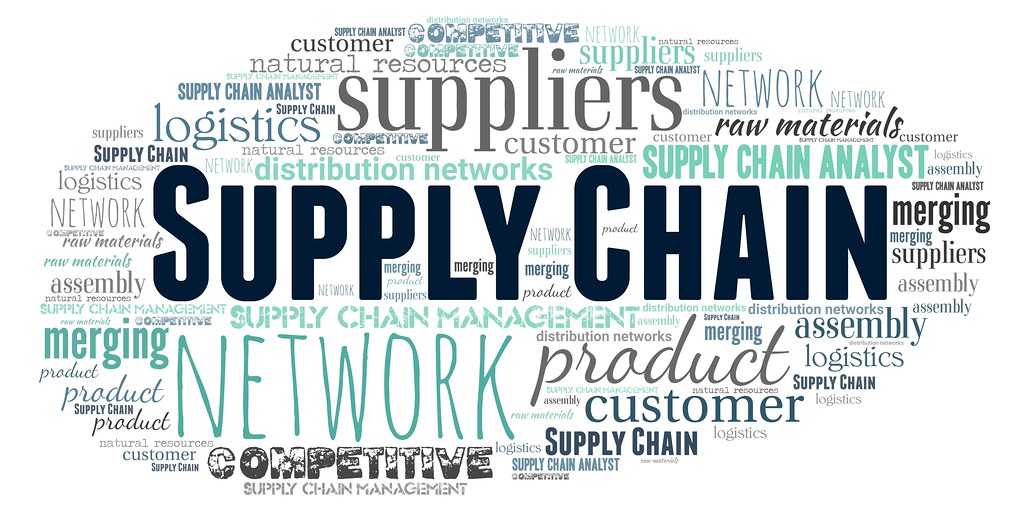How AI and automation can address America’s broken path from factories to consumers
There are few things that can turn the mood faster, and more efficiently, than a nice bowl of ice cream. From the chocolate syrup and sprinkles to the whipped cream and cherry on top, a bowl of ice cream provides the sense of comfort that consumers craved throughout the pandemic. Which is why we faced with horror the ever-increasing grocery store signs placed on empty shelves, apologizing when items were out of stock due to Covid-19-related supply chain disruptions.
Indeed, the global supply chain is broken. The status of sheet metal, computer chips and all the ingredients making up our beloved comfort foods is completely up in the air, and we’re seeing the aftermath of these issues play out across manufacturing sectors around the world.
For this very reason, on February 24, 2021, the Biden administration signed an executive order to help address America’s critical supply chains issues. With the creation of a 100-day review and strategy development process, Biden hopes to pinpoint the supply chain’s biggest vulnerabilities — and fix them.
What’s more is the current state of the job market. While openings are at a record high, the future is unpredictable. Businesses that had to let employees go during the pandemic are looking to keep labor costs low, predicting they’ll require fewer employees in the future. So, how does this reconcile with the effort of “fixing the supply chain?” And who’s going to provide the helping hands needed at this critical juncture?
The answer lies in technology. With the pandemic-induced recession playing a big role in fostering investments in and adoption of AI, automation, industrial IoT and robotics, these innovations in technology will be used to produce more with less human workforce.
This is a radical change with respect to the past few years when Industry 4.0 initiatives were a “nice to have.” Today, they’re a “must-have,” as manufacturers need tools and technology that can help their factories produce, despite a reduced and scattered workforce and massive supply chain disruptions. Technologies such as AI, which can extract actionable insights from machines, cameras and other sensors deployed on the production floor, help keep production output up and running and deliver the products to the next step of the supply chain, all the way to the final consumer.
Since the beginning of 2021, applications of AI in manufacturing have become more commonplace. Let’s look, for example, at the food supply chain, where AI can be sprinkled into so many steps, such as prepping fields to set up the optimal growing conditions for a harvest and monitoring unsafe or low-quality finished products and tracking the origin of a product from its ingredients to its end consumer. And in between, AI can help mitigate human error on the production floor to reduce the millions of tons of wasted food making its way to the dumpsters every year.
On the factory floor, AI is also used today to make sense of the streams of complex sensor data sourced from food packaging machines to monitor the machine’s inner workings and alert the operator if a derailment from a normal production regimen occurs. This prevents the machine from damaging products or causing a costly line shutdown, in turn causing production and shipping delays.
In logistics, a key component of supply chains, AI can be used to automatically locate expiration dates for packages, read them and output standard format dates that can be logged in the customer’s control system, a process often subject to failures that result in incorrect data, extra manual labor and delays in shipping.
AI is also being used to boost quality in automotive parts, despite fewer workers on the production line checking such things as brake calipers, drive shafts or interior upholstery. Previously, these parts were only visually inspected on the production floor by a human. Today, the human workforce is less available and — even with humans present — this process can lead to inconsistent results.
Similarly, in the food industry, it’s common for workers to only perform spot checks at the end of the line, which means that the product issue carries over to the end of the production line when it’s too late to remedy. This often results in complete disposal of the product and a tremendous amount of waste.
How can AI be implemented quickly and effectively on the production line? There are several key factors to consider, starting with identifying the goals to be achieved:
• What metrics are targeted for improvement?
• What problem is being solved?
• What does success look like?
• Who will drive the AI implementation? (They don’t need to have AI expertise, but they do need a good understanding of the production process.)
• Is there any additional hardware that needs to be purchased?
• Is the lighting sufficient for the cameras to detect the defects?
For many food manufacturers, the goal is to cost-effectively achieve a 100% inspection rate, while allowing for the flexibility to adjust to line changeovers for different products or packaging. AI is uniquely suited to maximize food production and minimize waste — contributing to an overall healthier supply chain.
The supply chain is in dire need of repair, as there’s more “empty space” between workers, this time not only driven by social distancing, but by the lack of workers and the decreased workforce that all manufacturers see as a permanent situation even after the pandemic.
That space is already being filled by technologies such as AI, working alongside their human counterparts on the factory floors and assisting in all stages of production, from checking the quality of our ingredients and parts all the way to final assembly and shipping of products to end consumers.
The path to fixing the supply chain — and keep getting that much-needed ice cream to boost our mood after a tough day — passes through AI.
This article was originally published on Forbes.

